The road to a healthy smile runs through busy lives—ones that are changing every day.
From braces to Invisalign® aligners, we deliver modern orthodontic treatment for kids, teens, and adults that does more than straighten teeth. It moves and aligns with your life. Schedule today to learn why we are the community favorite orthodontist in Buffalo, NY.
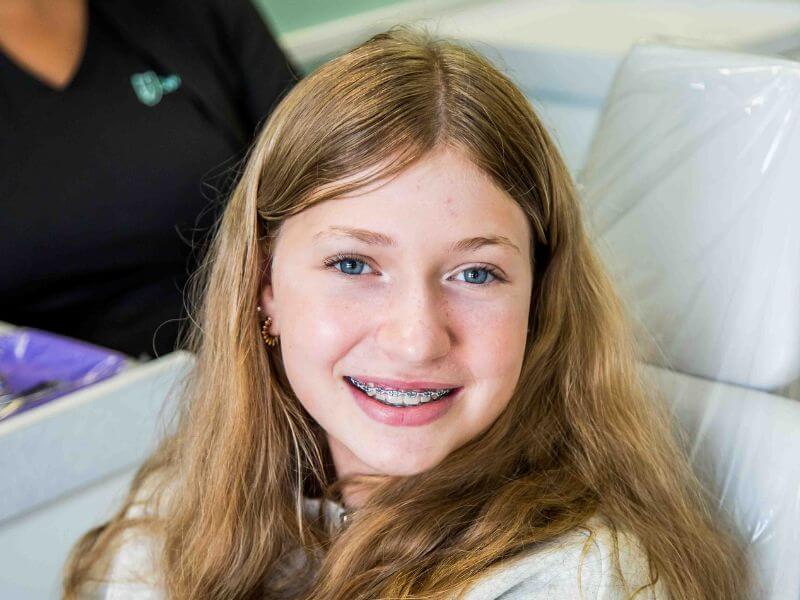
Treatment for kids and teens.
Kids and teens can have their first orthodontic screening as early as seven and as late as seventeen.
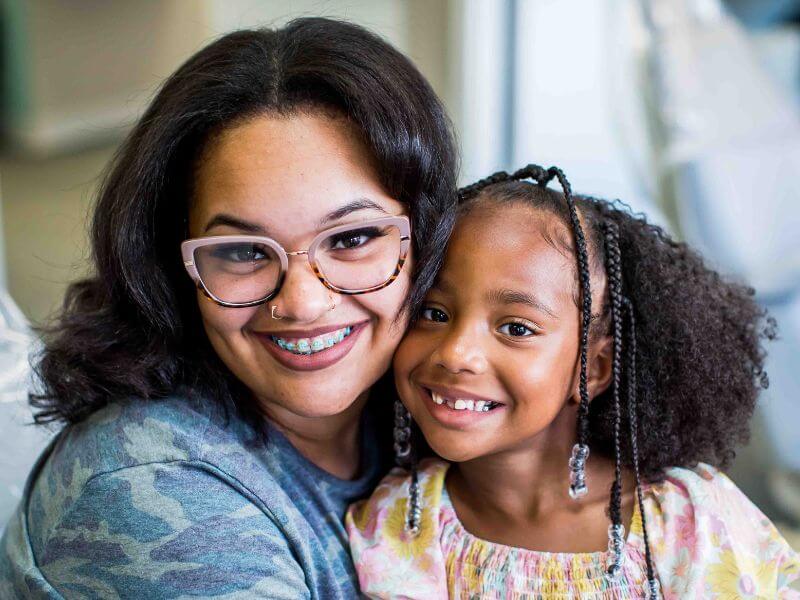
Treatment for adults.
There’s never a wrong time to pursue the smile you’ve always wanted.
Your Buffalo Orthodontics Team
We are a deeply-rooted, multi-location orthodontic practice serving families all over Western New York, and we’ve been straightening smiles since 1955.
Whether we’re caring for a child, teen, or adult, every smile we see is different, and that informs our personalized approach to modern orthodontic treatment. When you make the wise choice for you and your family, you can expect a precise and efficient experience that aligns with your busy life—and above all, keeps you smiling. We specialize in braces and invisalign with convenient offices throughout Buffalo.
Wherever you are in Western New York, there’s an Owl office near you.
Our Story: The Wise Choice for Orthodontics in Buffalo.
Meet your orthodontist, Dr. Walla.

Dr. Matthew Walla joined the Owl Orthodontics family in August 2010 and became the leader of the practice in 2019. He is originally from Indiana (go Hoosiers!) and grew up in a small town near Chicago, Illinois. Dr. Walla received his Bachelor of Arts in Biology from Indiana University before earning his dental degree from New York University, where he graduated as valedictorian of his class. Dr. Walla continued at NYU to complete a two-year post graduate program in orthodontics and dentofacial orthopedics. He is a member of the American Dental Association, American Association of Orthodontists, and the Omicron Kappa Upsilon National Dental Honors Society. When Dr. Walla isn’t at the office, he’s spending time with his wife, Liz, and his son, Ethan. He enjoys listening to music, reading fiction, and snowboarding.
Treatments that align with your life.
Your bite is as unique as your fingerprint. So it better be treated like one-of-a-kind. At Owl, we meet every new patient with an open mind, ready to gain a clear understanding of your smile’s specific needs. After that, we’ll be with you every step of the way, tailoring your treatment plan to put you on the straightest path to a straight smile.
Metal braces.
Metal braces are made of high-quality, durable stainless steel and are the most common type of braces. Today’s metal braces are smaller, more comfortable, and more attractive than their predecessors.
Ceramic braces.
Ceramic braces move teeth just as efficiently as metal braces but are less noticeable because the brackets are clear. Due to that aesthetic appeal, ceramic brackets are popular with adult patients.
Damon braces.
The Damon™ System features tie-less braces that don’t need to be “tightened” and are gentle to the teeth and tissues. The teeth are moved quickly using memory-shape wires that require fewer adjustments. Patients who choose Damon braces will need to make fewer office visits and often experience a shorter overall treatment duration than other options.
Invisalign®.
For adults and teens who want a virtually invisible way to straighten your teeth, Invisalign® is the answer. Invisalign® clear aligners are free of wires, metal, and brackets, making them more comfortable than traditional braces. Plus, you can remove them to brush and floss normally and even to eat foods that are off-limits with metal braces. Learn more about Invisalign® today.
What to know about your first visit.
So you’re thinking about booking your first visit with the Owl team and wondering what to expect. Here’s a short rundown of exactly what will happen when you come into any one of our four offices. And if you’ve already made an appointment, awesome! Hit the buttons below for the forms you’ll need to fill out prior to meeting with our team.

1. Tour the space.
When you arrive, you’ll be introduced to one of Owl’s knowledgeable treatment coordinators and shown around the clinic. Our goal is to make you as comfortable at Owl as possible. Have Questions? Ask away – that’s what we are here for!
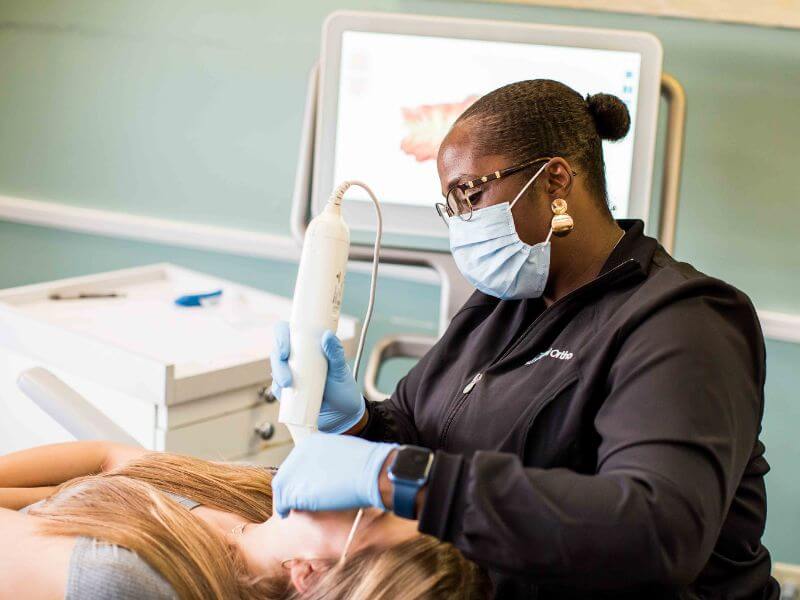
2. Open wide.
After a short tour, you’ll be introduced to one of our orthodontists who will review any dental records that have been provided and do an initial exam. Nothing to be nervous about and nothing painful—just a short assessment.

3. Explore treatment options.
After your exam, our orthodontists will have a pretty clear picture of what the best option (or options) is for you. We’ll talk through those together and answer any questions about the pros and cons before we get into more practical considerations.
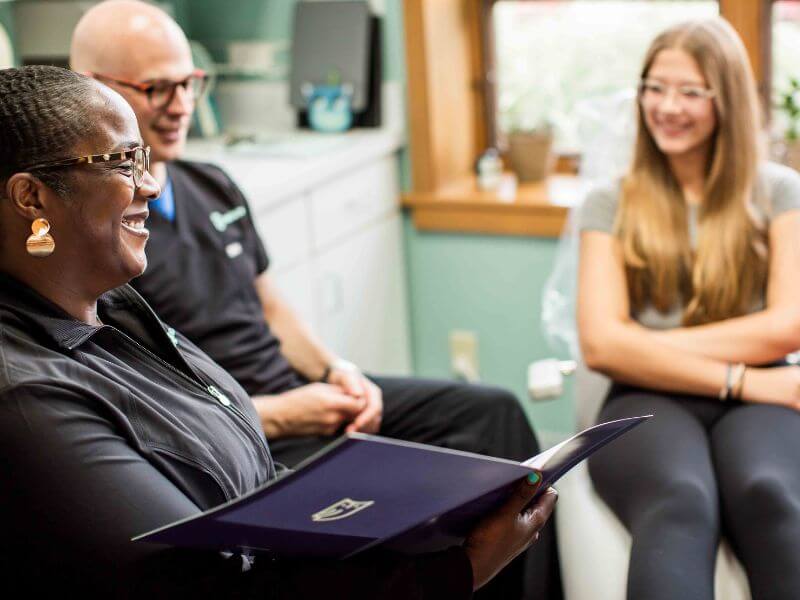
4. Discuss practicals.
Committing to orthodontic treatment is a big step for many families, both from a time investment standpoint and a financial one. We’ll answer key questions like how long treatment will take, how much it will cost, and explore payment options so there are no surprises down the road.
Ready to get started?
We’re betting there a few other things you’d like to know—things like insurances we accept, payment options, and the like. And here they are. If you have any specific questions about your insurance provider, don’t hesitate to get in touch.
What kind of insurance do you accept?
Owl participates with most major insurance companies. If your insurance covers orthodontic treatment, we’ll be able to determine that using the information you provide on your First Visit form. We can also help coordinate payments through your flexible spending account, if you have one, and will handle filing all your claims once treatment is underway.
What type of payment do you accept? Do you offer financing?
- Cash, including money orders and personal checks.
- Credit, including VISA, MasterCard, and Discover.
- Flexible Spending Account via your insurance plan.
- Orthobanc is a helpful service that will electronically draft your monthly payments from your checking or savings accounts. (Bonus: This service allows Owl to offer in-house financing interest-free!)
- CareCredit is a third-party option that can help you finance your treatment.
What forms will I need to fill out to get started?
So we can have the most productive first visit together, please fill out and submit both the First Visit and the applicable child and teen or adult form electronically before coming in. This will allow us to be as accurate as possible when discussing insurance information as part of your visit.
